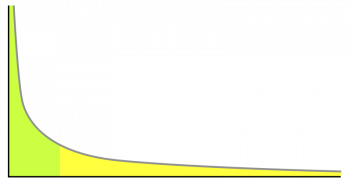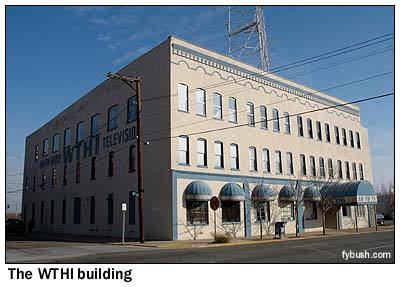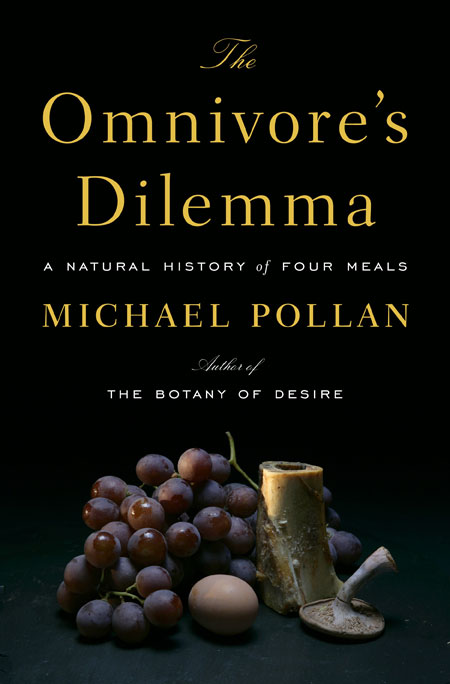A Long-Tailed Media Omnivore’s Dilemma
Jonathan Nichols-Pethick / DePauw University

Thanks to an audible.com account, an iPod connection in my car, and a long commute to work every day, I’ve been catching up on the reading for which I’ve otherwise lost time over the last few years. Two books in particular – an unlikely pair and both of them from 2006 – have got me thinking about the future of local television: Chris Anderson’s The Long Tail and Michael Pollan’s The Omnivore’s Dilemma.12 Both authors are concerned, to one degree or another, with new economies of distribution and with the sustainability of small-scale, niche, and local production. Both are also concerned with the issue of abundance: how it is created, managed, and consumed.
In his chapter on the local food market, “Greetings from the Non-Barcode People,” Pollan writes that “a successful local food economy implies not only a new kind of producer, but a new kind of eater as well, one who regards finding, preparing, and preserving food as one of the pleasures of life rather than a chore” (259). While the metaphor stretches thin quickly, the simple act of substituting the word “food” with the word “media,” and “eater” with “consumer,” “viewer,” or “user” invites us to think more deeply about the impact of new media economies on local production, distribution, and consumption. What might a successful local media economy look like? What kinds of demands and commitments does a local economy make on local consumers? What kinds of new opportunities arise?
It doesn’t take a lot of imagination to see that the local media economy in the U.S. is fading fast. The April 13, 2009 edition of Broadcasting and Cable ran a story – increasingly familiar – about the end of local news at WYOU, the CBS affiliate in the Wilkes Barre-Scranton DMA.3 This fourth-place station, with a news division run by its co-owned sister station, WBRE (both owned by Nexstar), discovered that it could save nearly $900,000 in costs annually by simply eliminating its unprofitable news operation. Fueled by regulations allowing duopolies in smaller markets along with the inability of these markets to adequately support four competing newscasts in the same time period, and business models tied to the broadcasting past, the local television news market is shrinking. In fact, the entire local television market is on the brink of major contraction with the threat of the major broadcast networks opting for bypass via cable, satellite, and the web an increasingly viable reality.

But is this contraction inevitably negative? What are the opportunities for local television production and consumption brought on by new technologies and new economies? Again, Pollan might be instructive: “Local food, as opposed to organic, implies a new economy as well as a new agriculture – new economic relationships as well as new ecological ones” (257). Much like the industrial food chain that Pollan describes, the media industries can be seen as comprising the industrial (conglomerates and subsidiaries), the industrial organic (locally situated organizations that make use of the production and distribution strategies of the industrial system in order to capitalize on a nominally local market for information), the local (small-scale, independent, and locally situated producers that exist largely outside traditional distribution channels – think of the “alternative television” movement and community activist media), and the personal (producers who have no interest in distribution beyond individual use or the closest circle of like-minded individuals). If we concentrate on the interplay between the different levels of this structure, we might find some useful potentials for a sustainable culture of local production, but only if we rethink the purpose and function of our larger media economy and “agriculture.”

So what might this media economy and agriculture look like? Some have suggested that locations like YouTube have opened up spaces for a variety of different producers to get their wares “on the shelves,” leveling the disparities of access between the industrial and the personal and everything in between. This is largely the point that Chris Anderson stresses in The Long Tail. For Anderson, recognizing the potential value of the area under the long tail of available products encourages digital aggregators and distributors (such as iTunes, Amazon, and eBay) to provide the variety that is absent from “bricks and mortar” retailers like WalMart and Borders. In the world of the long tail, scarcity is no longer a problem. Scarcity (of spectrum), of course, is the structuring component of broadcast media. So, in a word, the new media economy is built on variety; and an agriculture built on variety is much more sustainable (and sustaining) than a monoculture.

But variety itself is not necessarily local. The health and vitality of local television stations, in fact, may be waning in the face of that very variety. With so many other options for news and entertainment available, why would we limit ourselves to the relatively circumscribed world of local television, caught up as it is in the strategies of the industrial system? Why wouldn’t we turn to alternative sources that can be easily accessed via aggregators like YouTube? For anyone interested in creating and sustaining a vibrant and truly local media culture, two reasons come to mind. First, aggregators like YouTube are not local in their presentation. While the variety on YouTube is exciting and obviously useful, it is without particular location – and location does matter still in terms of locally situated politics. Second, aggregators such as YouTube are too reliant on standard economic relationships that are now threatening to alter the seemingly egalitarian structure of the service. In a recent Slate.com article, Farhad Majoo explains that the cost of running YouTube for one year exceeds $700 million.4 This figure includes the cost of bandwidth as well as license fees for high-end copyrighted material. But the site only generates about $240 million in advertising revenues. And since advertisers are unlikely to select politically challenging videos (let alone my personal home movies) to showcase their products, the likelihood is that a hierarchy will emerge that will necessarily feature the industrial or industrial organic rather than the local or the personal.
Despite its problems, though, the new and emerging media economy and “agriculture” can benefit local media. First, the potential contraction of local network television affiliates (still far off) could yield a stronger local ethos. Without network demands, and needing to differentiate themselves in the larger media market, locally based media outlets could find that producing for a truly local audience is actually a sustainable practice. For their part, audiences could find that locally conscious media production could be as satisfying as the best of the industrial offerings. Finally, thinking about the long tail of local media, by taking on the role of community media aggregators on a small scale, local media outlets could open up new opportunities for increased community activity and increased flow between traditional and emerging distribution outlets (television and the web, mobile devices, etc).

The troubling thing about Pollan’s book is that there emerges no untroubled option to the dilemma of “what to eat.” Similarly, there are no easy or simple solutions to the problem of “what to watch.” And Anderson seems too interested for my tastes in how to build a business model for the already powerful players. But, like Pollan, it’s worth thinking about what problems face our contemporary media environment, and to address honestly the fact that for many people in many ways it has become unsustainable.
Image Credits:
1. Local TV
2. The Long Tail
3. New Production Spaces: YouTube
4. Local Television Station
5. The Ominvore’s Dilemma
Please feel free to comment.
- Anderson, Chris. The Long Tail: Why the Future of Business is Selling Less of More. New York: Hyperion, 2006. [↩]
- Pollan, Michael. The Omnivore’s Dilemma: A Natural History of Four Meals. New York: Penguin Press, 2006. [↩]
- Malone, Michael. “Killing News to Save the Station.” Broadcasting and Cable. 13 April, 2009: 14. [↩]
- Manjoo, Farhad. “The High Cost of Running YouTube.” Slate.com. 14 April, 2009. http://www.slate.com/id/2216162/pagenum/all/. Accessed 21 April, 2009. [↩]
It is refreshing to hear someone provide optimistic possibilities for the local in this ever-changing world of media production and consumption. It is so easy to surrender to the more powerful industrial or industrial organic, even with the increased opportunities for media distribution, which as you point out is not actually local. I applaud you for seeing the silver lining on what many view as a bleak and inevitable shift in production.